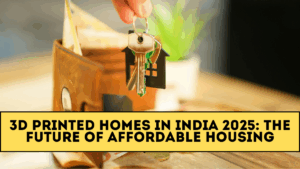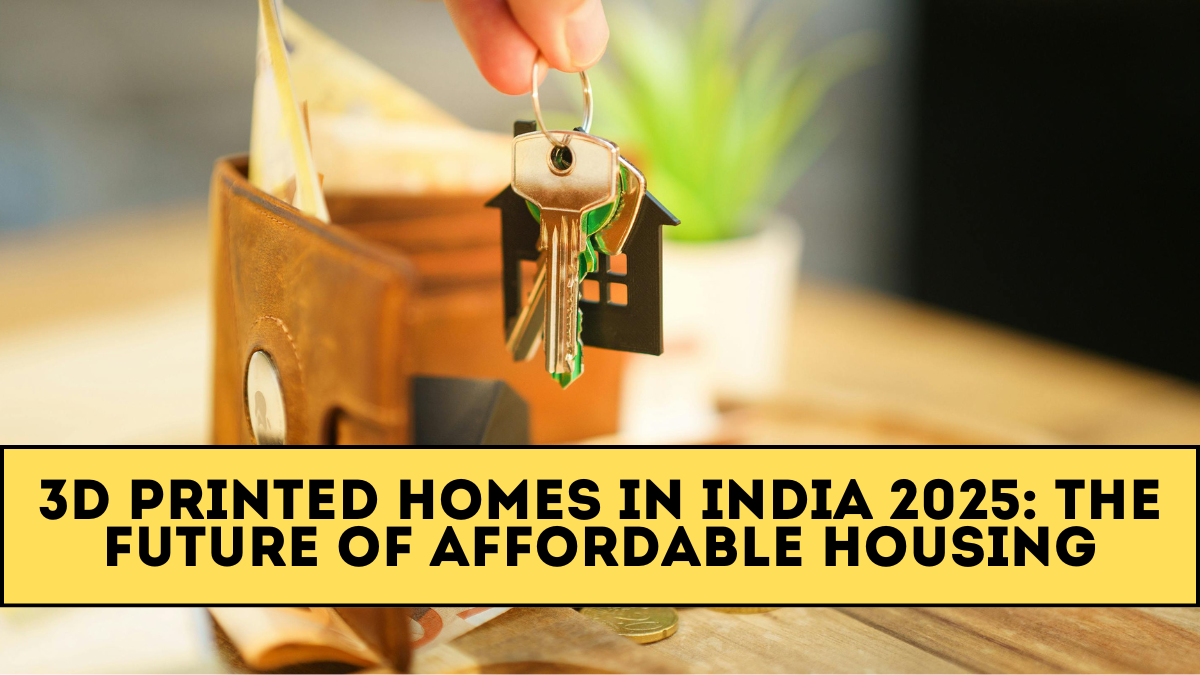India is witnessing a major shift in the construction landscape as 3D Printed Homes India technology gains momentum. This new approach allows houses to be built faster, at lower cost, and with reduced environmental impact.
As the demand for affordable housing continues to rise, 3D construction is becoming a practical solution supported by housing innovation and advancements in green tech.

Why 3D Printed Homes Are Gaining Popularity in India
India’s traditional construction industry faces challenges such as long timelines, labor shortages, and high material costs.
By integrating modern 3D printing systems, developers can build homes in a fraction of the time. These benefits make 3D Printed Homes India a preferred option for urban expansion and rural development programs.
Faster Construction and Lower Costs
One of the biggest advantages of 3D printed housing is the speed of construction. Walls and structural components can be printed within hours instead of days.
This drastically reduces labor needs and project expenses. As a result, 3D Printed Homes India is becoming a strong solution for low-cost housing initiatives.
Supporting Green Tech and Sustainability
3D printing uses precise material distribution, which minimizes waste. Many builders use eco-friendly concrete blends and recycled materials.
This supports India’s push for green tech, as it reduces CO₂ emissions and ensures a more sustainable construction process. The technology also encourages the use of energy-efficient designs.
Housing Innovation for Urban and Rural India
The technology isn’t limited to major cities. Rural regions can benefit from custom-designed, durable structures that withstand local weather conditions.
Thanks to housing innovation, 3D printing can adapt to different terrains, climates, and community needs. Homes can be designed with improved ventilation, lighting, and disaster-resistant features.
Customizable Designs at Affordable Prices
Unlike traditional methods, 3D printing offers high flexibility in design. Architects can create complex shapes without increasing costs.
This makes 3D Printed Homes India ideal for constructing community housing, hostels, villas, and relief shelters. Customization becomes accessible even for budget projects.
Government and Private Sector Collaboration
Several startups and housing agencies are adopting 3D printing technologies to meet large-scale housing demand.
Pilot projects across India demonstrate how housing innovation can solve affordability challenges. The use of green tech further aligns with national sustainability goals.
Conclusion
The rise of 3D Printed Homes India marks a major turning point for the housing sector. Faster construction, customizable designs, and strong green tech advantages make 3D printing an ideal choice for affordable homes. As innovation expands and more developers adopt the technology, 2025 may become the year when 3D printed housing moves from experimental to mainstream across India.
This modern construction approach promises safer, quicker, and more sustainable living spaces for communities nationwide.
FAQs
What are 3D printed homes?
These are houses built using large-scale 3D printers that create structural components layer by layer.
Why is 3D printing important for India?
It helps reduce construction time, costs, and material waste, supporting affordable housing goals.
Are 3D printed homes durable?
Yes. They are built using strong concrete mixes designed to withstand heat, rain, and structural stress.
Is 3D printing eco-friendly?
It reduces waste and supports green tech practices, making it more sustainable than traditional construction.
Can rural areas benefit from 3D printed homes?
Absolutely. Custom designs and fast construction make the technology ideal for rural housing development.
